News & Views
Wild Service: Why Nature Needs You, edited by Nick Hayes and Jon Moses
Charlotte Maberly reviews a new book that argues that it is only by including human beings in nature that we can preserve it
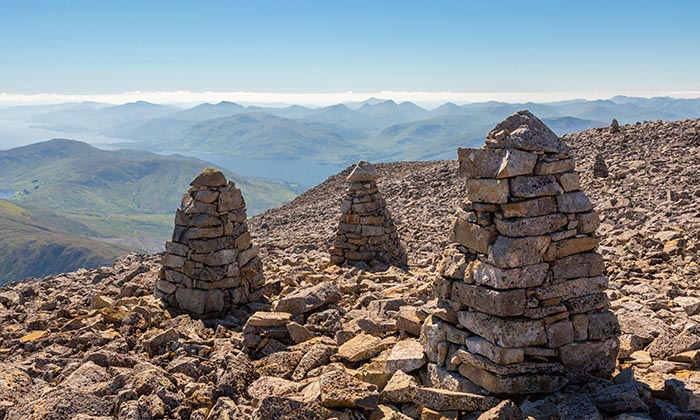
The Architecture of Belonging: stone cairns on the summit of Ben Nevis, Scottish Highlands, Scotland. Photograph Joshua Windsor [/] / Alamy Stock Photo
Service is the foundation stone of belonging. (p. xiii)
According to the writers, activists and environmentalists who have contributed to Wild Service, our society has created ‘a deep-rooted orthodoxy that has solidified through years of normalised exclusion: that people represent a threat to nature, and that if we are allowed to be there, we should be invisible.’ Collectively, they challenge this belief, and ‘celebrate the presence of humans in nature, [valuing the] signs that remind us of a wider culture of connection’. (p. xiii)
The book is curated Nick Hayes and Jon Moses, who were founding members of the Right to Roam campaign [/] in the UK. This was established in 2020 to promote greater access to uncultivated areas in England, where, in contrast to many other European countries, only a very small proportion (about 8% of land and 3% of rivers) is open to the general public. Hayes and Moses argue that centuries of increasingly exclusive land access have severed cultural and spiritual connections between people and nature, and within ourselves. Healing these fissures, they say, can only begin by changing not only our conception of nature and our place in it, but also by giving us experience of it.
The overall message of Wild Service, therefore, is to advocate for a greater involvement with the natural world within our own local environment, urging us to be of service to nature by accepting our part in what happens now and next. It explores the root causes of our dysfunctional relationship and the resulting symptoms, such as ‘nature deficit disorder’ in children, and the unmonitored exploitation of natural resources. But rather than stopping with a dispiriting account of the problems, it offers encouragement and examples for positive action.
The book consists of 15 essays, each addressing a major theme such as ‘Reconnection’, ‘Stewardship’, ‘Reciprocity’, ‘Homage’, ‘Healing’, followed by case studies that illustrate how the approaches developed in the essays have been applied in practice. Plus there is a series of five short ‘meditations’ on ‘The Architecture of Belonging’ which celebrate the interaction between people and landscape through features like cairns, bothies and rope swings. While the specific actions are very much orientated towards the UK, its main argument – that we need to learn to serve nature, not remove ourselves from it – and its emphasis on local action is equally relevant to anyone in any part of the world.
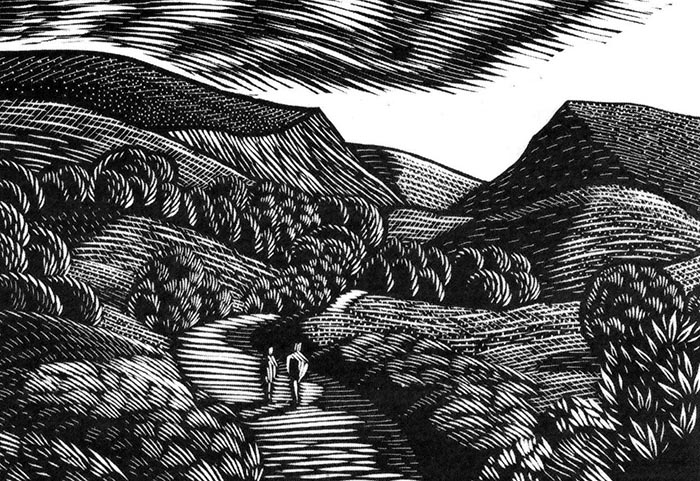
The Myth of Wilderness
.
The central problem that the book addresses is that globally, in the face of climate change and plummeting biodiversity, our response has been to create conservation areas and sites for ‘rewilding’ that essentially exclude human beings. It is perhaps not illogical to want to remove ourselves from nature when we understand the extent to which we caused it harm. But Wild Service views this response as stemming from a flawed notion that nature can only heal in our absence, which at its worst, permits us to relinquish our responsibility.
Harry Jenkinson, in his essay on ‘Kinship’ gives a vivid example of what happens when we see nature and people as incompatible in the case of Yosemite National Park in California. When John Muir, the ‘revered great-grandfather of conservation’ (p. 81) ‘discovered’ the space in 1868 and deemed it a national treasure that should be preserved so that everyone could enjoy it, he did not include the resident indigenous population in his design. He saw the activities of tribes such as the Miwuk, who had been living and shaping the environment for thousands of years, as a threat to the extraordinary ecology there, and decreed that they had ‘no right place in the landscape’. Consequently, the US army was called in to protect the land from them.
It was Muir’s vision that people from all over America and further should be able to come and enjoy the grandeur and majesty of ‘unspoilt’ nature in Yosemite, which he believed would engender a sense of greater responsibility to nature among the population. But Jenkinson tells us that ‘far from preserving wildlife, the ecological health of Yosemite plummeted following the removal of indigenous people, while the incidences of massive forest fires soared…’ (p. 83) and over the following centuries the population of the Miwuk fell by 96% to the point of near extinction.
This is a story that has been repeated – and continues to be repeated – across the world as what has become called ‘The Yosemite Model’ has been applied in other places, from India to the Congo. Nadia Shaikh comments in her essay on ‘Recommoning’ that this policy
… is born of a misguided understanding of wilderness as a world without humans. And as we extend this thinking across continents, we’re exporting exclusion and the extinction of culture. The recent global commitment to ‘protect’ 30 per cent of global land for conservation is a dramatic expression of this. The West calls it a success while indigenous peoples call it ‘the biggest land grab in history. (p. 33)
Jenkinson comments that in a ‘stark inversion of the truth, we have come to believe that tourists benefit wildlife, but indigenous peoples do not’ (p. 83), noting the irony that over three million people now visit Yosemite every year in search of a people-less landscape. He argues for a very different understanding, that human beings and nature have always lived together in a relationship of kinship and harmony, and he quotes the Lakota chief Luther Standing Bear who once stated: ‘Only to the White man was nature a “wilderness”.’ (p. 84)
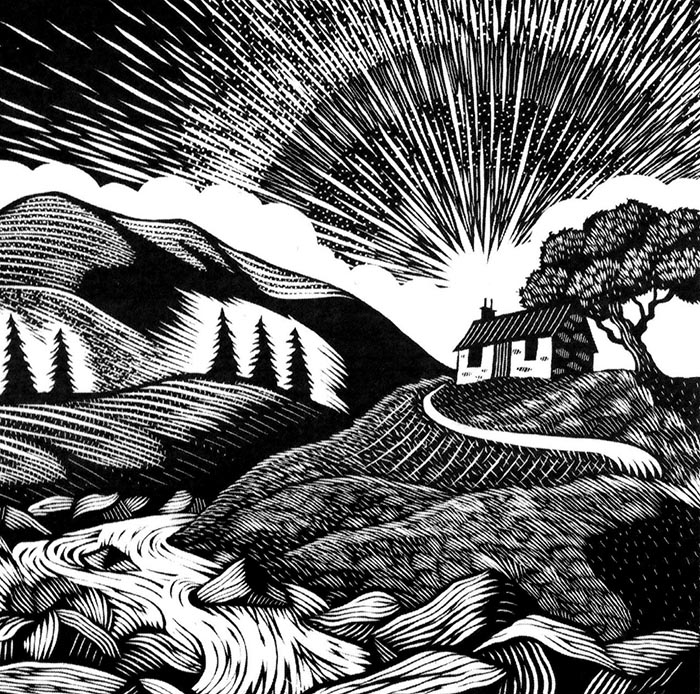
Wild Service
.
Hayes and Moses believe that being able to freely explore and interact with the countryside is the first step in rebuilding this different relationship with nature. They acknowledge the widely held concern that if people are given free access, they will harm what little nature remains, but maintain that it is more damaging and irrational to expect people to care about, or act on behalf of, something of which they have no direct experience. When people cannot gain their own experiential knowledge of the natural world, they will inevitably perceive it as other, or as irrelevant to them.
Conservationist Nadia Shaik talks about the change of perspective that an attitude of service entails. She relates the trajectory of her own career which was, as for the majority of conservationists, sparked by an urgent sense of needing to ‘help solve’ the environmental crisis. But an unexpected encounter challenged her perspective and she found herself transitioning from wanting to save nature to wishing to serve it. This distinction, she reflects, is the key ingredient in enabling people to be in a thriving and unified relationship with nature, and she quotes author Rachel Naomi Remen:
When you help, you see life as weak; when you fix, you see life as broken; and when you serve, you see life as whole… When we serve in this way, we understand that this person’s suffering is also my suffering, that their joy is also my joy and then the impulse to serve arises naturally – our natural wisdom and compassion presents itself quite simply. (p. 31)
The real key to change, therefore, is finding ways to place ourselves in nature such that we can forge a meaningful bond. This goes far beyond simply going for a walk. Each of the essays ends with a practical illustration of ways people have found to serve nature. They include the young girl, Becca, who transformed a tiny suburban garden into a butterfly sanctuary; Adrian, who planted hundreds of willow whips discarded by the local council, and completely restored an area of ‘wasteland’ into a lush and vibrant ecosystem, using homemade catapults and ‘seed bombs’: and Ibrahim, a Syrian immigrant still awaiting his UK residency after 13 years, who has been monitoring the population of sea birds on a small island in the North East , forming a ‘bond of belonging’ with them. (p. 235)
Further examples encourage us to see the ways we create sites of meaningful interaction with nature; from placing a rope swing by a river, to the more formal establishment of Bothy culture which offers free, permanently open accommodation to all throughout Scotland’s mountainous regions. These are examples
… of how space becomes place. A place is an area within space that has been annexed by socially constructed meaning. Fencing off an area is a relatively modern approach to designating and designing place, but for thousands of years a place has always been marked from within, not without. (p. 25)
In addition, Hayes, in his own essay on ‘Culture’, reflects that throughout our past, the performance of folk stories, songs, and belief in the spiritual aspects of nature, opened our minds and hearts to an existence greater and more complex than our rational minds could countenance. This allowed us to perceive nature, not solely as a pleasant backdrop, a resource, or as an ecosystem to monitor, but as something essential for and inseparable from our existence. He cites the example of the Indigenous people of West Papua, the Hubula, who cultivate a reciprocal relationship with the natural world by singing to it. Singing is an act that opens and offers the heart. By singing to the natural world, they create a bond that is neither tangible nor quantifiable, but which forges a connection and creates a channel for service.
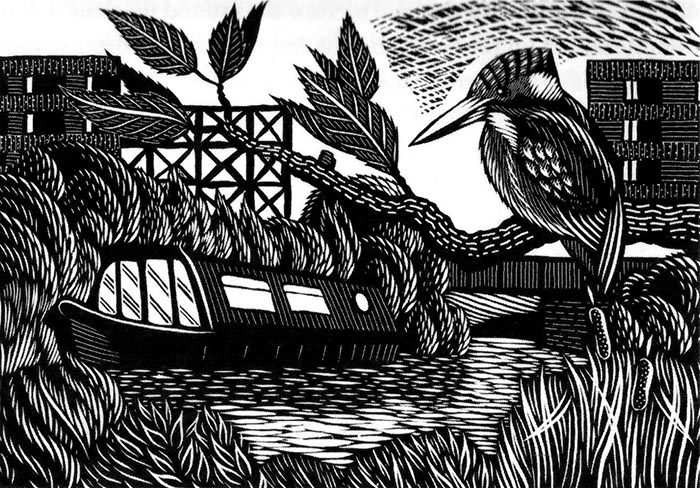
Conclusion.
Far from being another enervating rundown of the environmental catastrophe that we face, Wild Service is a call to action with a route map towards change. But it makes it clear that the first step on this journey is reassessing our beliefs and definitions of nature, and how we can or should behave towards it. This implies the recognition that our primary connection to the natural world is a spiritual one. Nick Hayes puts this very succinctly in his Prologue:
Service has another meaning, one that takes us back to the church and the services ministered within. A church service is a regular ritualistic re-enactment of the values upheld by the religion. It is a homage to the beliefs that have brought everyone together. […] [Similarly] the act of caring for nature, coupled with the practice of telling its stories and singing its songs, is an act of reverence, of devotion, a recentring of its integral importance to our society. Wild Service reintroduces the vital lost element in our […] relationship with the land: the sacred. (p. xiv)
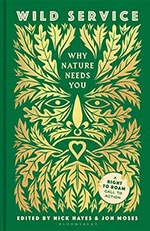 Wild Service was published by Bloomsbury Publishing in 2024.
Wild Service was published by Bloomsbury Publishing in 2024.
Illustrations by Nick Hayes in Wild Service, pp. 117, 265, 74.
Charlotte Maberly is a freelance writer interested in the interconnections between people, place and nature. Read more at FoodConnects.net
More News & Views
Don’t Take It Easy
Richard Gault is inspired by Michael Easter’s book The Comfort Crisis and explores the idea of ‘misogi’ during a 600-mile walk across Scotland
Book Review: ‘The Serviceberry’
Martha Cass contemplates the message of a new book by Robin Wall Kimmerer that advocates ‘an economy of gifts and abundance’
Book Review: ‘Conversations with Dostoevsky’
Andrew Watson engages with an innovative new book by George Pattison which explores Dostoevsky’s relevance in the contemporary world
Thich Nhat Hanh & the Poetry of Engaged Buddhism
Philip Brown presents the poem ‘Recommendation’ and comments on the potential of contemplative art to foster compassion
Introducing… ‘Perfect Days’ and ‘Nowhere Special’
Jane Clark watches two films with a contemplative theme
Book Review: ‘Irreducible: Consciousness, Life, Computers and Human Nature’
Richard Gault reviews a new book by Federico Faggin, one of the leading lights of the science of consciousness
FOLLOW AND LIKE US
——————————————
——————————————
——————————————
If you enjoyed reading this article
Please leave a comment below.
Please also consider making a donation to support the work of Beshara Magazine. The magazine relies entirely on voluntary support. Donations received through this website go towards editorial expenses, eg. image rights, travel expenses, and website maintenance and development costs.
READERS’ COMMENTS
3 Comments
Submit a Comment
FOLLOW AND LIKE US
Beginning a summer in the Inland Northwest of the USA, this has moved to the top of my “to be read” list. Living in the borderland along Lake Roosevelt (formerly the Columbia River), we are near, but not necessarily of, the wilder lands. Being in service to our little area of borderlands is very appealing.
This is a beautiful, timely article! What a concept; to be of service to nature rather than to be denied access and involvement. This book should be read by every human. A complete “pivot” of thinking and doing, in the Wilderness – Wild Service. I’m ordering this book today. Thank you Charlotte Maberly, and thank you Beshara magazine for sharing this.
Thank you for flagging up this book. Your review is excellent and makes me want to read the book at once.